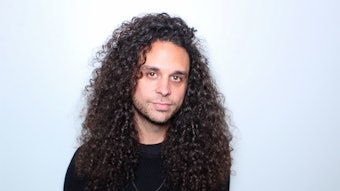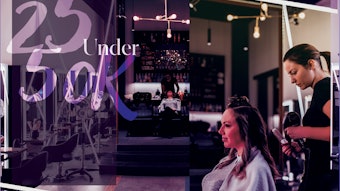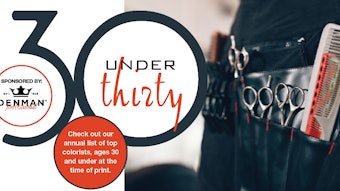
Trends come and go in the spa and esthetics industry, but some are here to stay: advanced modalities and treatments like dermaplaning, microneedling, injectables and more. In the United States alone, spending on nonsurgical cosmetic facial procedures like microneedling and injectables increased by over 228% from 2000 to 2018.1 These treatments are now widely offered in medical and day spas, making them increasingly accessible and popular with clients seeking aesthetic improvements that require little to no downtime.
This article is only available to registered users.
Log In to View the Full Article
Trends come and go in the spa and esthetics industry, but some are here to stay: advanced modalities and treatments like dermaplaning, microneedling, injectables and more. In the United States alone, spending on nonsurgical cosmetic facial procedures like microneedling and injectables increased by over 228% from 2000 to 2018.1 These treatments are now widely offered in medical and day spas, making them increasingly accessible and popular with clients seeking aesthetic improvements that require little to no downtime.
While understanding these modalities is important, we often overlook the fact that the products you pair with them can be just as vital as the technology used. To support your clients’ desired outcomes, it’s helpful to be aware of which natural ingredients support results in the skin and recovery. Before we dive deeper, it’s important to note that you should always follow device manufacturer or practitioner guidelines when pairing any of these ingredients with advanced modalities and treatments.
Let’s walk through some of the most common advanced modalities and ideal ingredients that complement them to help you deliver standout results next time you’re in the treatment room.
LED Therapy
LED therapy is a non-invasive modality that utilizes wavelengths of light to target skin concerns without exposing the skin to UV radiation. Red light therapy is regarded as the most popular method for its ability to penetrate deeply into the skin, stimulating collagen production, reducing oxidative stress and supporting cellular repair. Blue light therapy works better on superficial layers, making it effective for addressing mild-to-moderate acne by targeting P.acnes bacteria and calming inflammation.2
While this therapy offers a range of benefits, your clients can see even better results by preparing their skin with the right ingredients before treatment.
Vitamin C
Vitamin C is one of my favorite ways to enhance the results of LED therapy. Because Vitamin C is a powerful antioxidant, it helps brighten the skin and reduce oxidative damage. When applied before red light therapy, it promotes collagen synthesis and activates fibroblasts, making it ideal for clients concerned about fine lines and wrinkles and dullness.3 When choosing a formula that includes vitamin C, look for serums or other translucent products so that wavelengths of light can penetrate effectively.
Green Tea Extract
Green tea extract, derived from Camellia sinensis leaves, is rich in polyphenols and offers additional antioxidant protection.4 Try applying a translucent formula before administering blue light therapy to help reduce redness and soothe inflammation. This can be particularly beneficial for acne-prone skin.
Intense Pulsed Light Therapy & Broadband Light Therapy
Intense pulsed light therapy (IPL) delivers gentle pulses of broad-spectrum light into the dermis, targeting skin concerns like hyperpigmentation, redness and early signs of aging.5 Broadband light therapy (BBL) is an advanced version of IPL that allows practitioners to fine-tune wavelength, pulse width and frequency, addressing more specific skin concerns with longer-lasting results.6 Because both light-based treatments target pigmentation, pairing them with topical melanin inhibitors before and after treatment can protect the skin and enhance client results.
Licorice Root Extract
Licorice root extract (Glycyrrhiza glabra) is a gentle and effective ingredient that addresses pigmentation. It suppresses tyrosinase, the key enzyme involved in melanin production.7 When used in a daily leave-on product like a serum six to eight weeks before treatment, this extract helps reduce the risk of rebound pigmentation that can follow IPL or BBL treatments. You can also recommend that clients continue using licorice root extract, accompanied by an SPF, following their treatment to maintain an even skin tone.
Swiss Alpine Extracts
Derived from plants grown in high altitudes, Swiss alpine plant extracts like Edelweiss (Leontopodium alpinum) are rich in antioxidants that can improve skin luminosity and defend against environmental stressors.8 When used before and after IPL and BBL treatments, these formulas reinforce the skin’s resilience, supporting results.
Microneedling
Microneedling is a go-to modality for improving acne scars, fine lines, wrinkles, hyperpigmentation and enlarged pores. Although it effectively stimulates collagen and elastin, it also creates microscopic channels in the skin that trigger the body’s natural healing process, leaving the skin more vulnerable.9
Most microneedling device settings can be adjusted to different frequencies and depths of penetration, and with an increased depth comes an increased recovery time and healing process as well. Because of these variations, it’s essential to follow the device manufacturer and practitioner guidelines, and to avoid contraindicated ingredients during specific timeframes of the healing process (varying from 24 to 72 hours). Upon completion, you can recommend serums and moisturizers with ingredients like copper tripeptide and zinc hyaluronate to support the skin.
Copper Tripeptide
When applied topically post-microneedling, copper tripeptide helps improve the skin’s firmness and elasticity while repairing protective skin barrier proteins to support the skin’s natural healing response.10
Zinc Hyaluronate
Zinc hyaluronate has two main benefits: it combines the humectant properties of hyaluronic acid with the anti-inflammatory properties of zinc. This helps the skin recover after microneedling by reducing redness, soothing irritation and calming inflammation, all while keeping the skin hydrated. Together, these ingredients soothe potential dryness, sensitivity and reactivity associated with microneedling.
Injectables
Neuromodulators like Botox and dermal fillers such as Juvéderm are some of the most sought-after modalities today.11 Neuromodulators work by targeting muscles to soften the appearance of wrinkles, while dermal fillers restore volume and enhance facial contours.
Whether your clients are embracing injectables or exploring the growing “no-tox” and filler-free movements, natural ingredients like myoxinol and multi-weight hyaluronic acid can be worth recommending. When used in formulas like moisturizers and serums, these ingredients help mimic or support injectable results.
Myoxinol
Myoxinol is a plant-derived peptide complex extracted from okra seeds (Hibiscus esculentus) that acts as a natural alternative to traditional neuromodulators.12 Whether used on its own or between Botox appointments, this ingredient inhibits muscle contractions, helping to smooth expression lines.
Multi-Weight Hyaluronic Acid
Multi-weight hyaluronic acid delivers hydration at multiple skin depths, plumping the surface while reinforcing moisture retention in deeper layers.13 It’s ideal for pre- and post-treatment hydration, helping clients enhance filler longevity and making the skin more supple.
Advanced treatment room modalities like LED therapy, IPL and BBL, microneedling, and injectables offer significant results, but you can further their benefit by pairing them with the right natural ingredients. By choosing product formulas that prep, support and enhance each modality, you can deliver lasting results and elevate your clients’ experiences.
References
- Hemsworth, Barbara, Cody Hemsworth, and Sarah A. Richmond. “Nonsurgical Medical Aesthetics and Patient Quality of Life: An Umbrella Review.” Aesthetic Surgery Journal Open Forum 6, (January 1, 2024). https://doi.org/10.1093/asjof/ojae096.
- Opel, Daniel R, Erika Hagstrom, Aaaron, K. Pace, et al. “Light-emitting Diodes: A Brief Review and Clinical Experience.” J Clin Aesthet Dermatol 8, no. 6 (June 2015): 36. https://pmc.ncbi.nlm.nih.gov/articles/PMC4479368/.
- Juliet M. Pullar, Anitra C. Carr, and Margreet C. M. Vissers. “The Roles of Vitamin c in Skin Health.” Nutrients 9, no. 8 (August 12, 2017): 866. https://doi.org/10.3390/nu9080866.
- Koch, Wojciech, Justyna Zagórska, Zbigniew Marzec, et al. “Applications of Tea (Camellia Sinensis) and Its Active Constituents in Cosmetics.” Molecules 24, no. 23 (November 24, 2019): 4277. https://doi.org/10.3390/molecules24234277.
- Gade, Anita, Gabriella F. Vasile, and Richard Rubenstein. “Intense Pulsed Light (IPL) Therapy.” PubMed, StatPearls Publishing (2022). https://www.ncbi.nlm.nih.gov/books/NBK580525/.
- Bitter, Patrick and Jason Pozner. “Retrospective Evaluation of the Long-Term Antiaging Effects of BroadBand Light Therapy.” Cosmetic Dermatology 26, no. 2 (February 1, 2013): 34–40. https://www.researchgate.net/publication/287860227_Retrospective_Evaluation_of_the_Long-term_Antiaging_Effects_of_BroadBand_Light_Therapy.
- Kang, Min Hye, Gwi Yeong Jang, Yun-Jeong Ji, et al. “Antioxidant and Anti-Melanogenic Activities of Heat-Treated Licorice (Wongam, Glycyrrhiza Glabra × G. Uralensis) Extract.” Current Issues in Molecular Biology 43, no. 2 (September 18, 2021): 1171–87. https://doi.org/10.3390/cimb43020083.
- Cho, Won Kyong, Hye-In Kim, Soo-Yun Kim, et al. “Anti-Aging Effects of Leontopodium Alpinum (Edelweiss) Callus Culture Extract through Transcriptome Profiling.” Genes 11, no. 2 (February 21, 2020): 230. https://doi.org/10.3390/genes11020230.
- Iriarte, Christopher, Olabola Awosika, Monica Rengifo-Pardo, et al. “Review of Applications of Microneedling in Dermatology.” Clinical, Cosmetic and Investigational Dermatology 10, no. 10 (August 2017): 289–98. https://doi.org/10.2147/ccid.s142450.
- Pickart, Loren, and Anna Margolina. “Regenerative and Protective Actions of the GHK-Cu Peptide in the Light of the New Gene Data.” International Journal of Molecular Sciences 19, no. 7 (July 7, 2018). https://doi.org/10.3390/ijms19071987.
- Hopkins, Zachary H, Christopher Moreno, and Aaron M Secrest. “Influence of Social Media on Cosmetic Procedure Interest.” The Journal of Clinical and Aesthetic Dermatology 13, no. 1 (2020): 28. https://pmc.ncbi.nlm.nih.gov/articles/PMC7028372/.
- Thi, Trang, Eun-Ji Yi, Xiangji Jin, et al. 2024. "Sustainable Dynamic Wrinkle Efficacy: Non-Invasive Peptides as the Future of Botox Alternatives" Cosmetics 11, no. 4 (July 11, 2024): 118. https://doi.org/10.3390/cosmetics11040118.
- Juncan, Anca Maria, Dana Georgiana Moisa, Antonelle Santini, et al. “Advantages of hyaluronic acid and its combination with other bioactive ingredients in cosmeceuticals.” Molecules 26, no. 15 (July 22, 2021): 4429. https://doi.org/10.3390/molecules26154429.











